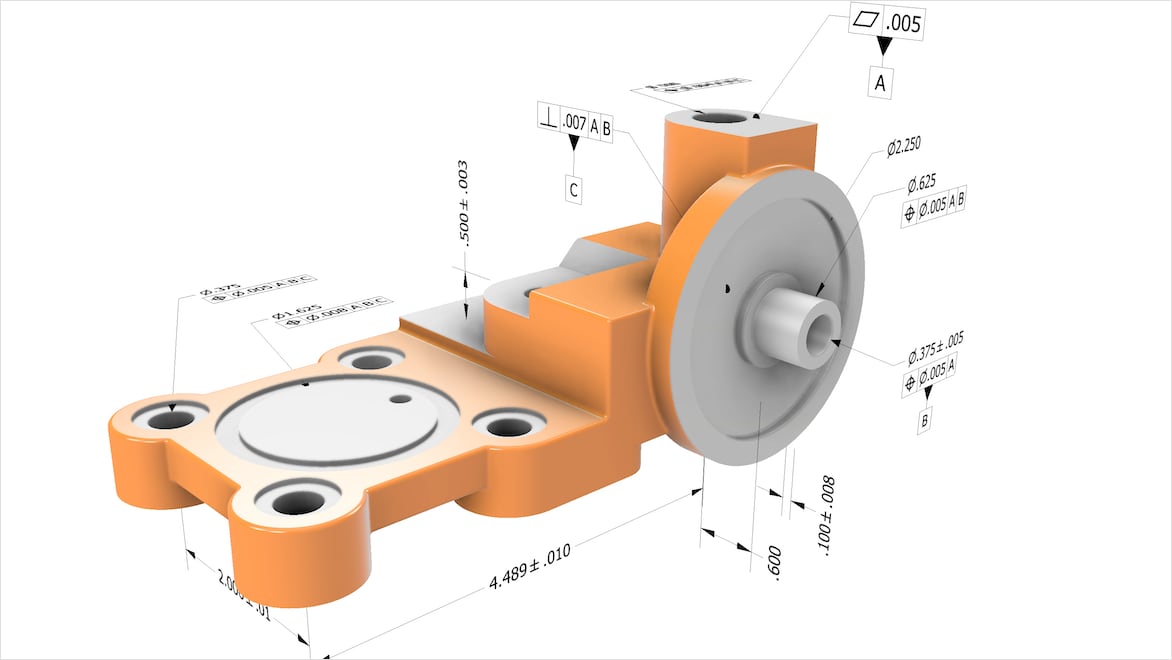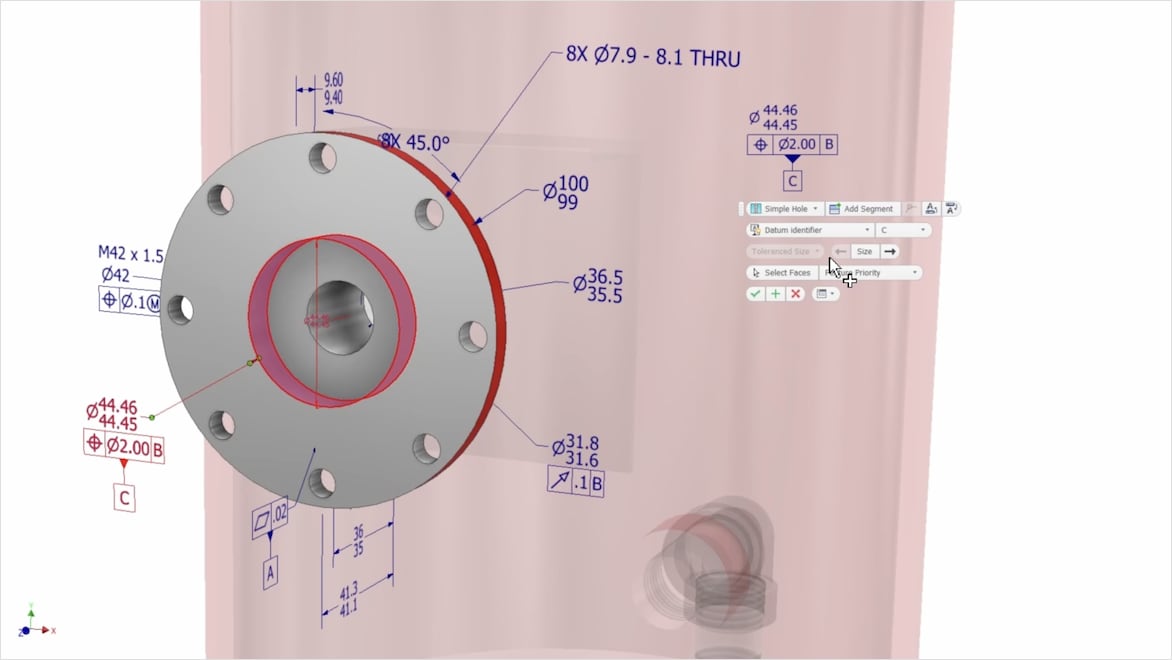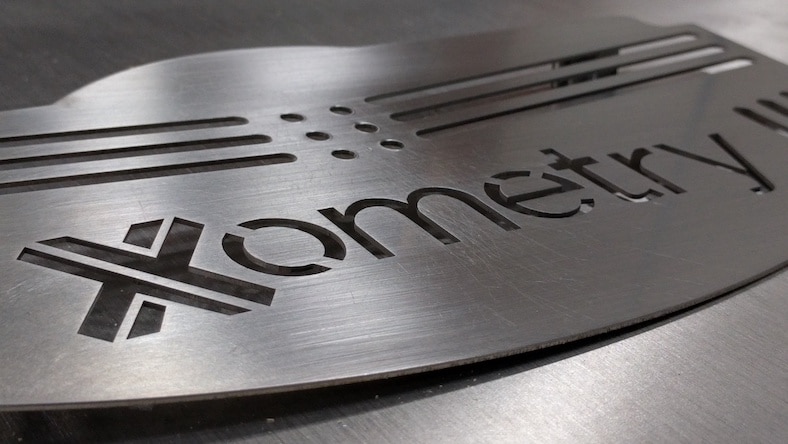& Construction

Integrated BIM tools, including Revit, AutoCAD, and Civil 3D
& Manufacturing

Professional CAD/CAM tools built on Inventor and AutoCAD
Model-based definition (MBD) is a process that places all the information traditionally conveyed in 2D engineering drawings directly into a part or product’s 3D CAD model.
Today’s product developers face constant pressure to work faster but often resist it because they equate working faster with reduced quality when working on more complex products and assemblies.
However, designers and engineers can reduce time to market without reducing the quality of their work by automating manual processes. For example, implementing model-based definition through MBD software conveniently substitutes 2D engineering drawings with all the necessary product information embedded within the 3D CAD model. This reduces development cycle time by eliminating technical drawings and improving communication by supplying accurate PMI directly to stakeholders.
This information can include all geometric dimensioning and tolerancing (GD&T) symbols and data, materials, standard dimensions, engineering configurations, design intent, quality requirements, the bill of materials, and any other manufacturing notes, such as surface finishing details.
Product data management (PDM) software digitally manages the 3D CAD model and its revisions, which secures data and ensures that all stakeholders have access to the right information at the right time.
While the traditional method of communicating requirements and design intent through 2D drawings is well established, it’s not infallible. It takes time and skill to produce 2D graphics, in addition to the training and experience needed to understand them. Additonally, 2D drawings can be open to misinterpretation, and this miscommunication can lead to production delays, scraps, and rework—wasting time, materials, and money.
Stemming from the necessity of tight tolerances in demanding industries such as aerospace, MBD was codified in the 2003 ASME Y14.41 Standard “Digital Product Definition Data Practices,” by a committee of industry leaders such as Boeing, Caterpillar, General Motors, Lockheed Martin, Raytheon, and Rolls-Royce. Standardized MBD helps these and other international companies collaborate among teams and partners that may be distributed across many countries and speak many languages.
Modern MBD software makes it easier to implement reliable, universally understood annotations of model-based definition into 3D models. These act as a secure and digitally managed source of truth for the disparate teams involved in every stage of a product’s lifecycle: ideation, design, simulation, tooling, manufacturing, inspection, and servicing.
Compared to 2D paper drawings, using MBD can shorten the design-to-manufacturing-to-inspection process by about 75%, according to a National Institute of Standards and Technology (NIST) study from 2016. Practices like MBD have also aided the rise of “model-based enterprises” (MBE), product development companies that maximize the process efficiencies from 3D model data for design and manufacturing—and downstream operations across internal teams, external suppliers, and partners.
Because model-based definition annotations are standardized and shareable between software programs, MBD eliminates the manual re-entry of data from 2D drawings—reducing errors and time spent on the design, manufacturing, and inspection processes.
Using model-based definition makes deliverables simpler and reduces response times. Engineers spend less time on design documentation and writing out less information by hand.
Carefully annotating 3D models in MBD software reduces communication errors and manufacturing prep time by embedding quality requirements into CAM software.
MBD data stays with the model through the design and manufacturing workflow, making communication and collaboration between departments more effective.
With MBD documentation, there are no paper files to maintain and no misinterpreting 2D drawings, which cuts down on the waste from scraps and rework.
Using a digitally managed MBD method can save money by eliminating the labor and material costs of producing, storing, and managing 2D drawings.
Get Inventor + AutoCAD + Autodesk Fusion + more—Professional-grade tools for product development and manufacturing planning.
Professional-grade product design and engineering tools for 3D mechanical design, simulation, visualization, and documentation.
Inventor Tolerance Analysis software is designed to understand the cost impact of dimensional variation.
CATERPILLAR
Heavy equipment leader Caterpillar uses MBD for its initiatives, such as these semi-autonomous construction vehicles.
Image courtesy of Caterpillar
GENERAL MOTORS
Generative design early adopter General Motors has also adopted MBD for its design and manufacturing processes.
Image courtesy of General Motors
XOMETRY
This on-demand manufacturer highlights the time-saving benefits of using model-based definition and other product manufacturing information (PMI).
Image courtesy of Xometry
Don’t tolerate assembly problems; this Autodesk University class shows how the Tolerance Analysis plug-in for Inventor helps you manufacture right the first time.
Learn how defining a CAD model with MBD saves time and adds value to downstream supply chain processes at Autodesk University.
See how CAD data is consumed by production engineering and CAM systems and why center-tolerance models are a best practice for providing CAD data for manufacturing.
MBD is an acronym for model-based definition, which annotates a 3D model with all the vital non-geometric information needed for manufacturing and inspection, such as dimensions, tolerances, symbols, finishes, and materials. MBD is a deliverable that comes embedded within a 3D model.
Autodesk Inventor software also uses the acronym 3DA (three-dimensional annotation) synonymously with MBD.
MBD and MBE are two sides of the same model-based coin, where the 3D model is the centerpiece around which design, engineering, manufacturing, and inspection processes are built.
Model-based definition (MBD) annotates a 3D model with the non-geometric information needed for manufacturing and inspection.
On the other hand, the term model-based enterprise (MBE) denotes a product development organization that has extrapolated the model-based ethos as far as possible. An MBE may use a 3D model as a single source of truth to inform decision-making and provide insights for design, engineering, internal and external supply chain processes, customer support, and more.
Product manufacturing information (PMI) includes several types of data describing a designed part or assembly, such as dimensions, tolerances, materials, and surface finishes. Model-based definition (MBD) is the technology for embedding PMI as metadata into a 3D model to eliminate the older method of conveying PMI through 2D drawings.
By including accurate PMI in a CAD model’s MBD annotations, that data is readily available as a single source of truth at every step of the product’s lifecycle.




